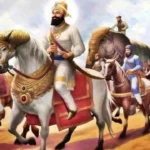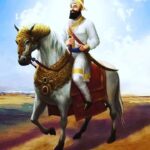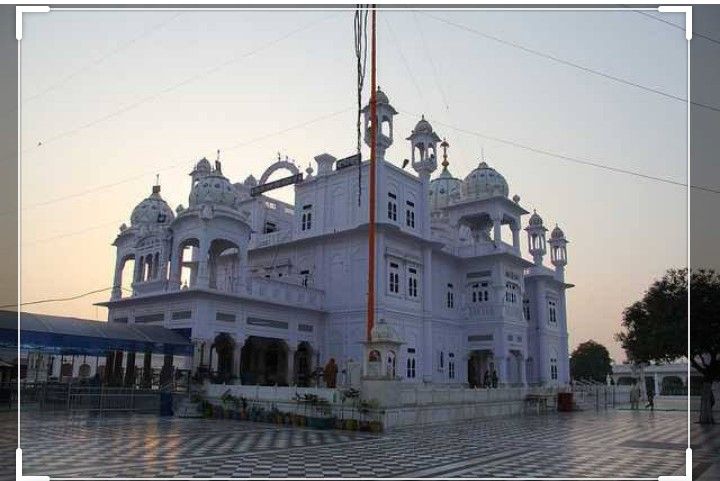Guru Hargobind was the 6th of ten Gurus (June 1595 – Feb 1644) of the Sikhism religion. At the teenage age of eleven, he set off as Guru, after the father’s execution, by the Mughal emperor Jahangir.
Guru Hargobind set up the Akal Takht shrine in Amritsar closeby Harmandir Sahib. He is an awesome Martial arts expert. He had directed a few followers and constructed up a small group of trained sikh soldiers. He also made a fort denoted Lohgarh in Amritsar. He was a visionary leader who worked for backward classes of other religions. He tries to reform society through the newest ideas.
Guru Hargobind and Sikhism
- Guru Hargobind was a saint soldier who started the Sikhs militarization.
- He had given several letters advising the Sikhs to grasp martial arts and taking military training.
- He had given importance to both spiritual and military powers, symbolizing by the two swords he used to carry out.
- He tried to protect his society against external invasions by building a wall around Amritsar city and constructing a fort denoted Lohgarh.
- He made the Akal Takht Sahib close to Harmandir Sahib, which was utilized for giving discussions and sermons associated with the problems facing the Sikh community.
- He had taken an active interest in spreading Sikhism. For this, he covered lakhs of miles in India.
- Due to his attempts, the entire Malwa region accepted Sikhism.
He made Sikhism famous in various chunks of India.
When he was just 11, Guru Hargobind achieved success with his father as Guru ji. Many incidents made him uneasy about Mughal rule. He just took up the Mughal coverage under the Shah Jahan. All this led to his long lasting struggle against Mughal abuse. He fought 4 battles against Shah Jahan. He was assigned with being the first Guru who had taken up arms to cover the Sikh faith.
Guru Hargobind and Jahangir
- Guru Hargobind saw the Mughals as the enemy of the Sikh faith from a very earlier timeline.
- Guru Hargobind advised the Sikhs to battle the Mughals.
- He used to carry up two Swords that symbolically represented Piri and Miri, which meant Spiritual and Martial authority, respectively.
- He constructed a fort denoted as Lohgarh closeby Amritsar to protect the city of Ramdaspur.
- He also set up the Akal Takht, which is one of the 5 Takhts of Sikhism. At the Darbar Sahib complex, it is situated in Amritsar, Punjab. It was utilized as a court, i.e., a place of justice.
- In 1609, when Guru ji was 14, at the Gwalior Fort, Jahangir put him in prison.
- Jahangir reasoned that the Sikhs have not paid the fine forcefully on Guru Arjan.
- After nearly 2 years of imprisonment, he was finally released.
- After his set free, Guru Hargobind’s camp was put under inspection by the Mughals.
- Guru Hargobind tried to reconquer the Sikh army once he was released.
- It is said that Jahangir followed up the tolerant policies of his father, Akbar, after 1611 CE, which lessened the anger between Guru Hargobind and Jahangir.
- Still, due to the continuous militarization of Sikhs, the Mughals executed a war against Guru Hargobind.
- led by Abdul Khan, the Mughal army lost against the Sikh army.
Guru Hargobind and Shah Jahan
- The rule of Shah Jahan started in 1627 CE.
- Due to the intolerant rule of Shah Jahan, the link between the Sikhs and the Mughals again got worse.
- Both armies fought certain battles at places such as Amritsar, Kartarpur, etc.
- In 1634, In the war of Amritsar, the Mughal army was defeated by the Sikh forces led by Guru Hargobind.
- Guru Hargobind also executed wars against Mughals provincial Governors.
- Expecting a more important retribution from the Mughal side, Guru Hargobind went to Shivalik Hills to combine his army.
- In the war of Kartarpur, which was fought in 1635, Guru Hargobind killed and tortured Chandu Shah, the killer of Guru Arjan.
- Shah Jahan tried to divide the Sikhism leadership by providing land granted to Dhir Mal, Guru Hargobind’s grandson.
- Shah Jahan needed Dhir Mal to achieve the success of Guru Hargobind as the Sikh Guru.
- Dhir Mal also favored Mughal rule and criticized Guru Hargobind.
- Guru ji died on 28 February 1644 in Punjab, Kiratpur, but before this, Hargobind ji nominated its other grandson, Guru Har Rai, as the Sikhism Guru after him.
Guru Hargobind and Samarth Ramdas
- The meeting between Samarth Ramdas and Guru Hargobind occurred in the early 1630s.
- Guru Hargobind was walking to Nanakmata in the East, and Samarth Ramdas was on its pilgrimage pathway to the North.
- They met when Guru Hargobind had returned from the hunting session.








